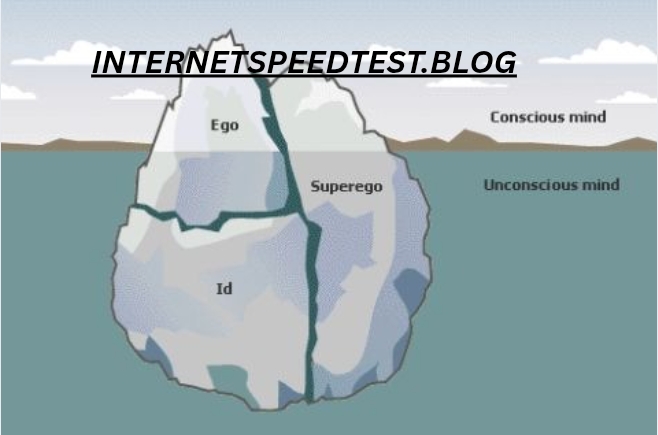Introduction
Understanding human personality has been a central focus in psychology for decades. Two prominent theories—Freud’s structural model of the psyche id ego superego enneagram personality system—offer unique insights into human behavior, motivations, and inner conflicts.
In this comprehensive guide, we’ll explore:
- Freud’s concept of the id, ego, and superego
- The Enneagram’s nine personality types
- How these two frameworks intersect
- Practical applications for self-awareness and growth
By the end, you’ll have a deeper understanding of how these psychological models shape personality and behavior.
Freud’s Tripartite Model: Id, Ego, and Superego
Sigmund Freud, the father of psychoanalysis, proposed that the human psyche is divided into three interacting components:
1. The Id: The Primitive Instinct
- Operates on the pleasure principle
- Seeks immediate gratification (food, sex, survival)
- Unconscious and impulsive
- Example: A baby crying for food without regard for others
2. The Ego: The Rational Mediator
- Functions on the reality principle
- Balances the id’s desires with societal norms
- Operates in both conscious and unconscious levels
- Example: Waiting patiently in line instead of pushing ahead
3. The Superego: The Moral Compass
- Represents internalized societal rules and morals
- Strives for perfection and guilt when failing
- Includes the conscience (right vs. wrong) and the ego ideal (aspirational self)
- Example: Feeling guilty after lying to a friend
Conflict Between the Three:
- A healthy psyche maintains balance among the id, ego, and superego.
- Imbalance leads to anxiety, neurosis, or maladaptive behaviors.
The Enneagram: Nine Personality Types
The Enneagram is a personality system that categorizes individuals into nine interconnected types, each with distinct:
- Core fears
- Desires
- Defense mechanisms
- Growth paths
Here’s a brief overview:
| Type | Core Fear | Core Desire | Key Trait |
|---|---|---|---|
| 1 – The Reformer | Being corrupt/evil | Being good, balanced | Perfectionistic |
| 2 – The Helper | Being unloved | Feeling loved | People-pleasing |
| 3 – The Achiever | Worthlessness | Being valuable | Success-driven |
| 4 – The Individualist | Lack of identity | Being unique | Emotionally deep |
| 5 – The Investigator | Helplessness | Being competent | Analytical |
| 6 – The Loyalist | Being without support | Security-seeking | Anxious/committed |
| 7 – The Enthusiast | Being trapped in pain | Freedom, joy | Adventurous |
| 8 – The Challenger | Being controlled | Self-protection | Dominant |
| 9 – The Peacemaker | Conflict/loss | Inner stability | Easygoing |
Each type has stress and growth paths, connecting to other types under different circumstances.
Connecting Freud’s Model with the Enneagram
How do Freud’s id, ego, and superego relate to the Enneagram?
1. The Id and Enneagram Types
- The id’s impulsive nature is most visible in:
- Type 7 (Enthusiast) – Seeks constant stimulation to avoid pain
- Type 8 (Challenger) – Acts on raw power and control
- Type 9 (Peacemaker) – Avoids conflict to maintain comfort
2. The Ego and Enneagram Types
- The ego’s balancing role is seen in:
- Type 3 (Achiever) – Adapts to succeed in society
- Type 5 (Investigator) – Uses logic to navigate the world
- Type 6 (Loyalist) – Seeks security through planning
3. The Superego and Enneagram Types
- The superego’s moral influence is strongest in:
- Type 1 (Reformer) – Strives for ethical perfection
- Type 2 (Helper) – Seeks validation through altruism
- Type 4 (Individualist) – Judges self based on authenticity
Key Overlaps:
- Type 1 (Superego-driven) vs. Type 7 (Id-driven)
- Type 3 (Ego-focused on image) vs. Type 5 (Ego-focused on knowledge)
- Type 9 (Id-driven avoidance) vs. Type 6 (Ego-driven anxiety)
Practical Applications for Personal Growth
1. Self-Awareness Through the Enneagram
- Identify your core fears and desires
- Recognize automatic defense mechanisms
- Understand stress and growth paths
2. Balancing Id, Ego, and Superego
- If too id-driven (impulsive): Practice delayed gratification (e.g., mindfulness).
- If too ego-driven (controlling): Learn to surrender control (e.g., trust exercises).
- If too superego-driven (rigid): Allow self-compassion (e.g., accepting imperfections).
3. Using the Enneagram for Relationships
- Type 2 (Helper) + Type 5 (Investigator): Balance emotional support with intellectual space.
- Type 8 (Challenger) + Type 9 (Peacemaker): Learn conflict resolution strategies.
Conclusion
Freud’s id, ego, and superego and the Enneagram provide powerful lenses to understand personality. While Freud’s model explains internal conflicts, the Enneagram offers a roadmap for growth.
By integrating these frameworks, you can:
✔ Gain deeper self-awareness
✔ Improve emotional regulation
✔ Build healthier relationships
Final Thought: Personality isn’t fixed—whether through Freud’s psychoanalysis or the Enneagram, growth is always possible.
FAQs
1. Can someone be a mix of multiple Enneagram types?
- Yes, but each person has a dominant type with wings (adjacent types) influencing behavior.
2. How does trauma affect the id, ego, and superego?
- Trauma can weaken the ego’s mediation, leading to id-driven impulsivity or superego-driven guilt.
3. Which Enneagram type struggles most with the superego?
- Type 1 (Reformer) often has an overly critical superego, leading to perfectionism.
4. Can the Enneagram help in therapy?
- Absolutely! Many therapists use it to uncover core motivations and defense mechanisms.
Would you like a free Enneagram test to discover your type? Let us know in the comments!
This article blends psychoanalytic theory with modern personality psychology, offering a fresh perspective on self-development.




